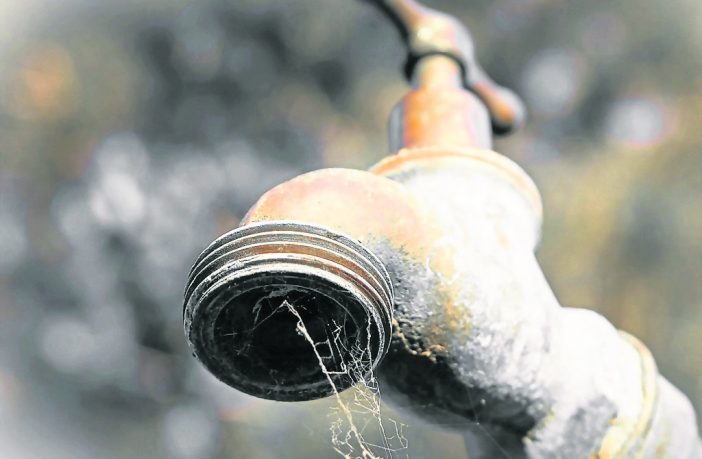- South Africa is, by some accounts, already ‘out ‘of water.
- In an already water-scarce country, demand outstrips supply, while water treatment plants falter and the country’s climate continues to warm at unprecedented — and deadly — rates.
During the first decade of South Africa’s democracy, 13.4 million people gained access to basic water services. But a tap in a home or in the yard is no guarantee that clean water regularly flows through it. In some North West and Limpopo communities, dry pipes briefly spurt to life at 3am. Residents who do not set an alarm to collect water, go without.
In the Free State, a good storm can send desperate families scrambling to put out buckets to catch the rain. Children will even scoop up pooling water with their hands to add to the haul.
Meanwhile, the water tankers brought in by the government to fill gaps in service delivery in the province have become big business, the Mail & Guardian reported last year.
A week of scarcity and excess
This week, the water tankers appeared for the first time in many Johannesburg neighbourhoods. This was after rolling blackouts felled one of the city’s major pumping stations. The city has experienced frequent water outages in the last year, although not as seemingly widespread as this week’s cuts.
Not coincidentally, the water trucks arrived on the coattails of a heat wave.
In the Northern Cape, temperatures above 40oC led to the deaths of at least five farmworkers from suspected heatstroke.
“The high temperatures were all the way to Springbok, and right up to Upington,” one worker who survived told News24.
The week’s headlines are a harbinger of what’s to come. South Africa’s demand for water now outstrips its supply. Water, of course, can be reused — but after more than a decade of neglect, mismanagement and corruption, the country’s water infrastructure can no longer supply many communities with reliable access to safe drinking water. Wastewater treatment plants, meanwhile, dump raw sewage into waterways, probably fuelling upticks in disease. And Eskom’s decline is deepening the problem.
South Africa uses, loses and pollutes more water than it has
Experts have spent more than a decade measuring the water South Africa has and comparing it to what it needs to fill the nation’s kettles, water its crops and mine its riches.
By 2002, what South Africa used in water was already outstripping what it had, says Dr Anthony Turton, professor at the Centre for Environmental Management at the University of the Free State. In 2003, scientists believed South Africa possessed 53 billion cubic metres of water. Today, Turton says better modelling and declining rainfall have placed that figure at about 49 billion cubic metres.
“After all considerations, it was discovered that we had allocated about 98% of all the water available in the country. Effectively we became water-deficient in 2002,” explains Turton.
He warns that South Africa is transitioning to a fundamentally water-constrained economy. Meanwhile, sewage management systems are collapsing and the country threatens to outstrip its capacity to process safe drinking water.
Turton concludes: “The South African water sector is entering the early phase of a ‘perfect storm’ driven by the convergence of significant drivers over which no [one]individual has any control.”
But when it comes to water, it is not just about how much you have — it’s about how good it is.
And what South Africa has, it is not very good at safeguarding. In the Department of Water and Sanitation’s latest drinking water report, more than 60% of water supply systems did not meet water quality standards — including those that didn’t even bother to report.
Meanwhile, the pipes that ferry water from plants or dams to taps are so poorly maintained that experts estimate that 40% or more of water in Johannesburg and eThekwini is lost to leaks and theft before it ever reaches consumers.
“South Africa is a water-scarce country, so we’re obviously affected by the semi-arid to arid climate,” explains Dr Anja du Plessis, a University of South Africa water expert.
“But what we’re seeing now is what’s called ‘economic water scarcity’. In places like Johannesburg… you have the water supplies; however, you are experiencing shortages because of dilapidated infrastructure.”
She continues: “[That] infrastructure is now collapsing under load shedding.”
This is a small extract from a very in depth and well researched article written by Laura Lopez Gonzales for the amaBhungane Centre for Investigative Journalism.
Read more on this exclusive story from the amaBhungane Centre for Investigative Journalism HERE

















